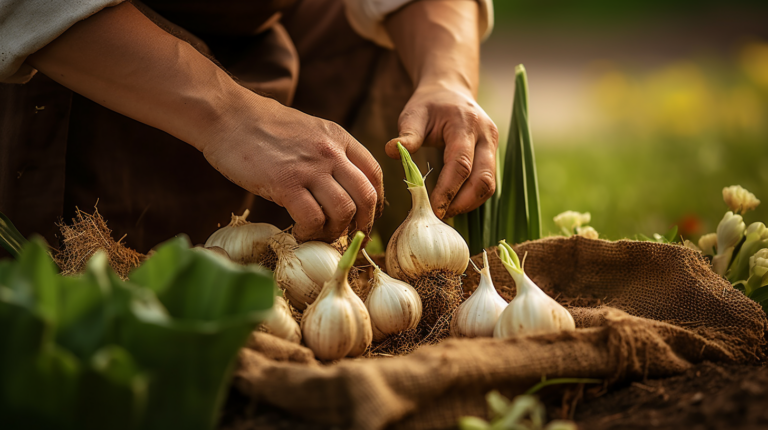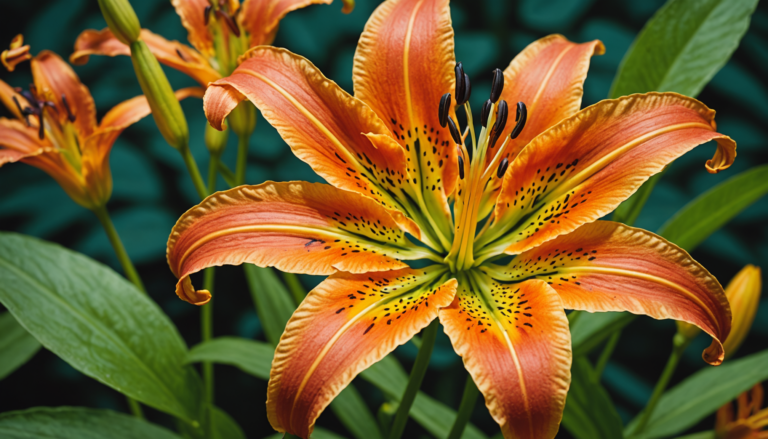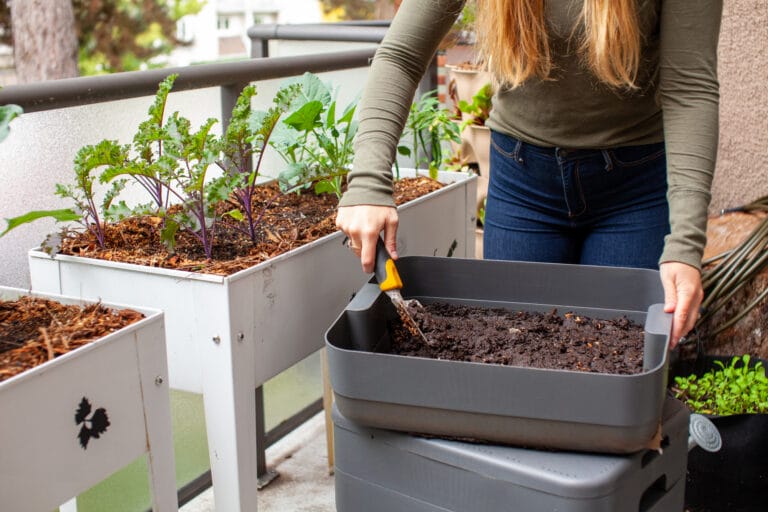The snake plant’s unique architectural form and strength have swiftly made it a popular choice for indoor plant lovers. Despite its resilient characteristics, it’s crucial to discover the ideal watering equilibrium to prevent either insufficient or excessive watering of the snake plant.
With a background steeped in horticulture, I’ve seen many a well-meaning plant parent wrestle with the dilemma of too much or too little water, which can make or break these succulent beauties.
Neglecting the nuances of proper watering is akin to ignoring the roadmap on a long journey; one wrong turn and you might find your snake plant with wilted leaves or even succumbing to dreaded root rot.
This article is crafted to shed light on such watering challenges and provide guidance anchored in rigorous science and hands-on experience. If you’re eager for your indoor oasis to flourish, stay tuned as we dive into tips that will nurture your botanical buddy—and perhaps impart some green-thumb wisdom along the way! In addition to addressing watering techniques, understanding seasonal planting times is crucial for successful growth. For those curious about when to plant loofah seeds, it’s essential to wait until the danger of frost has passed and the soil temperature is reliably warm. With this knowledge, you’ll be better equipped to cultivate a thriving indoor garden that flourishes year-round. Whether you’re cultivating houseplants or considering adding purple flowering tree species to your garden, understanding their specific watering needs is vital. By optimizing your hydration methods, you can create a thriving environment for all your plants, ensuring they not only survive but thrive in your care. Together, let’s explore the essential techniques that will transform your indoor and outdoor spaces into lush, vibrant retreats.
Key Takeaways
- Snake plants require less water than many other houseplants because they are from dry areas and store water in their leaves.
- Check the soil deeply before watering; it should be dry up to two inches deep for a snake plant. Use filtered or rainwater for better results.
- If overwatered, roots can rot; if underwatered, leaves get wrinkled. Adjust by checking moisture levels before giving more water and ensuring good drainage in pots.
- Cut off brown, mushy roots on an overwatered plant and repot in fresh soil with proper drainage to help it recover.
- For long-term health after fixing water issues, use well-draining soil, don’t over-fertilize, and place your snake plant where it gets indirect light.
Understanding the Watering Needs of a Snake Plant
Snake plants love dry ground more than wet. It means they typically only require a little fluid. Each type and age of snake plant might want different amounts of liquid. I ensure the potting mix feels very dry before adding more liquid, especially about two inches deep. It is essential because their roots could rot if they sit in it too long.
To keep my snake plant happy and hydrated, soaking the soil well is vital when it’s time to water. It ensures all the roots get enough to drink and also washes away any salt that could harm the plant over time.
But after sprinkling, I always let the soil get dry again before giving it another drink. It’s like a feast followed by a nice long rest for my green companion! This routine keeps the roots healthy and encourages them to stretch out in search of water. Interestingly, while I’m nurturing my plants, I often think about nature’s little quirks, like deer eating watermelon rind facts; they love to munch on the leftover scraps in gardens during summer. It’s a reminder of the interconnectedness of all living things, from the smallest seed to the curious animals wandering by.
Cater to your snake plant’s water needs per its species and growth stage
Every snake plant is unique, coming in different shapes and sizes. They each have their own liquid needs based on their species and growth stage. Young plants may need more as they’re still growing strong roots. Additionally, providing the right container size is crucial for healthy growth, as it can affect drainage and nutrient availability. While discussing container sizes, many gardeners often wonder what container size for parsley is ideal to ensure it thrives. Proper sizing not only supports root development but also helps maintain optimal moisture levels for healthy plants. Additionally, it’s important to adjust watering habits as environmental conditions change, ensuring optimal health for each individual plant. For those interested in diversifying their indoor garden, exploring vanilla bean seed cultivation tips can provide a fascinating challenge that complements the care of snake plants. Remember to consider factors like humidity and temperature, as these can drastically influence the success of any plant’s growth.
But once your snake plant is fully grown, you don’t need to hydrate it as much. If you administer too much water without considering your specific plant’s needs, you could inadvertently harm it.
To keep your plant happy, always check the soil before sprinkling. For most snake plants, letting the soil dry between hydrating works well. It ensures that young plants get enough liquid to grow but prevents older ones from receiving too much.
Not paying attention to these details can lead to bad habits that might harm your beloved green buddy over time. So, always consider what type of snake plant you have and its growth stage before reaching for that watering can!
Why do snake plants require less water than most houseplants?
Snake plants are tough and don’t need much liquid to thrive. They originate from arid regions, like deserts, where rainfall is scarce. Their leaves can store liquid, enabling them to endure extended periods without additional hydration.
It makes them great at dealing with H2O scarcity.
They have special ways of breathing that help retain it, even when it is hot or sunny for many days. Snake plants work well in your home if you sometimes forget to sprinkle them.
They don’t mind waiting for their next drink!
Dry soil vs. wet soil – striking the right balance
Finding the perfect amount of liquid for your snake plant is like walking a tightrope. You’ve got to keep it steady without tipping too far one way or the other. Dry soil can make your plant thirsty and cause its leaves to wrinkle and brown at the tips, which signifies that you’re not giving it enough hydration.
On the flip side, if the soil feels like wet mud, then hold up! That’s a sign you’ve been overdoing it with the watering can.
I always stick my finger into the soil about an inch deep. If my fingertip doesn’t feel any moisture, I know it’s time to give my plant a drink. But if that soil sticks to my skin, I step back and wait a few more days before even thinking about sprinkling it again.
Getting this balance right will help your snake plant stand tall and robust instead of drooping or rotting at its roots.
Signs Your Snake Plant is Underwatered
If your snake plant looks a little worse for wear, it could be too dry. If the leaves start feeling wrinkled and aren’t firm, your plant might need some liquid. These wrinkles indicate that the plant isn’t retaining liquid as it should be.
When you see them, it’s a hint that you’ve been underwatering.
Another clue is the weight of the pot or if the soil inside sounds hollow when you tap on it. The color of the potting mix can also be a good indicator; dark means wet, and light means dry. Check these signs to know when to give your snake plant a drink!
Identifying wrinkles – an undeniable sign of an underwatered snake plant
Wrinkled leaves on a snake plant scream, “Thirsty!” When we need water, our skin gets dry; the same goes for these plants. If you spot wrinkles or folds in your snake plant’s typically thick and sturdy leaves, that’s your cue.
The plant isn’t getting enough liquid to keep its leaves plump and robust.
Another thing to look out for is if the edges or tips start turning brown. It signifies that the snake plant lacks liquid and has been missing it for quite a while. Now, don’t rush to drown the poor thing! Check the soil first – if it feels dry several inches down, give your plant a nice drink.
Just pour slowly until you see moisture coming out of those drainage holes at the bottom.
Why might the leaves of your snake plant turn yellow due to underwatering?
Your snake plant may show yellow leaves if it lacks hydration. It occurs because the plant can’t absorb nutrients without enough liquid. The roots get dry, and the leaves lose their green color, turning yellow.
It differs from overwatering, where leaves also turn yellow, but too much can injure the roots for a different reason.
If you see a snake plant with yellow leaves, check the soil deep down to see if it’s dry or wet. Dry soil means your plant is thirsty and needs a drink. Be careful not to wait too long between watering times, as this can lead to more stress for your plant and even more yellow leaves.
What an underwatered snake plant looks like
An underwatered snake plant can be easy to spot once you know what signs to look for. Its leaves will start to show wrinkles, similar to when our skin gets dry. These leaves may also feel floppy or bend easily because they lack enough water to stay stiff and robust.
The tips of the leaves might turn brown or crispy, telling us it’s time for a drink. Usually, a snake plant stands tall with proud, sturdy leaves reaching upwards. But these robust leaves lose their vigor without water and can droop down.
If I see that my snake plant has dull or sunken leaves instead of its usual glossy sheen, I know it’s been too long since my last watering.
Signs Your Snake Plant is Overwatered
Your snake plant might get excessive water if its leaves feel soft and squishy. It is a sign that the roots may be rotting because they’ve been sitting in wet soil for too long.
Even after the soil looks dry, those poor roots could still be in trouble below.
Look at the leaves closely. If you see them turning yellow or brown, it could mean they’re not happy. Yellow leaves often occur when there’s lots of water without enough break time to let the soil dry out.
Brown spots can appear when too strong sunbeams burn minerals buildup from excess watering of your plant. Watch for these changes; they’ll tell you if you need to hold back on giving your green companion so much to drink!
How to tell if your snake plant is overwatered by checking the roots
I often see snake plants suffer from excessive water. If you suspect this might be happening to yours, start by taking the plant out of its pot. Now, let’s look at the roots closely.
Healthy roots should be firm and light in color. If they’re brown, mushy, or smell bad, that’s a sign of trouble – it means they’ve gotten lots of water and could be rotting.
If you find any black or very soft roots, those are rotten and need to go. Cut them off with clean scissors or shears until only healthy-looking roots remain. It can save your snake plant by stopping the rot from spreading further into the plant.
Remember to let the roots dry out before returning your snake plant to fresh soil that drains well.
The impact of overwatering on the leaves: discoloration and softness
Watch out for leaves that look off-color or feel too soft. These are significant signs of trouble. Overwatering your snake plant can lead to leaves that turn yellow, brown, or have mushy spots.
Think of it like giving a plant more food than it can eat – the extra sits there, causing harm.
Leaves should be firm and full of life, but when they’re overwatered, they lose their strength. They might droop and look sad because the water has damaged them inside out. It’s not just about lessening the amount of water; also, ensure your pot lets water flow through easily to keep roots from sitting in wet soil too long.
Overwatering snake plants: facilitating root rot and disease
Giving excessive water to your snake plant can be bad for it. The roots might start rotting, and this is a big problem. When the roots are in lots of water for a long time, they can’t get air and begin to die.
It makes it easy for diseases to attack the plant. If you see that the leaves feel soft or mushy, it could mean root rot is happening.
Root rot isn’t just about wet soil; it can continue to harm the plant even when the soil looks dry on top. Bacteria and fungi thrive in wet conditions, and they’re not good news for your snake plants – they make them sick and weak.
To keep your snake plant-strong, avoid overwatering so these nasty problems stay away.
Properly Watering Your Snake Plant to Keep it Healthy
Your snake plant requires the right amount of water to stay healthy. You should check the soil’s moisture before giving your plant more water. The best way to do this is by feeling the soil with your hand or using a tool that tells you if it’s dry or wet enough.
If the soil feels dry deep down, watering your snake plant is time.
Make sure not to use tap water with harmful substances like chlorine because it can harm your snake plant. Instead, use filtered water, which is safer and better for its growth. Watering should be done carefully — aim for when the top part of the soil is dry, but don’t wait until everything inside the pot is completely dried out.
It helps keep your snake plant happy and avoids problems from too much or too little water.
Knowing how much water your snake plant needs to thrive
Snake plants need just the right amount of water to be happy. Consider the pot size, where you place the plant in your home, and how warm it is inside. A larger pot holds more soil, which stays wet longer than a smaller one.
So, if you have a large pot for your snake plant, you’ll water it less often. But take your time! Check the soil every week by poking your finger in it. If the top two inches are dry, it’s time to give your plant a drink.
Here’s a tip: Water snake plants less in cooler months when they grow slower and use less water. They need more water in warmer times because it evaporates faster from the soil and leaves.
Let water flow through until some comes out of the bottom, then stop watering. This way, you help ensure that every part of the root gets moisture without drowning them in water – balance is key to keeping these tough plants healthy!
The importance of well-draining soil in preventing overwatering
Well-draining soil is a big deal for snake plants. This soil lets water flow through quickly so the roots don’t sit in lots of water. If the roots stay wet for too long, they can rot, and that’s bad news for your plant.
You want to ensure your potting mix has perlite, sand, or even small rocks to help drainage.
Choosing the right pot matters, too. Pots with holes at the bottom let extra water escape so it doesn’t hang around where it’s not wanted. A good mix helps hold just enough moisture and nutrients without keeping everything soggy.
I always go with a blend that dries out fairly fast between watering sessions – this way, my snake plant gets what it needs without going overboard on the water.
When and how often to water your snake plant
I know watering your snake plant on a set schedule is tempting. But hold on, these plants have their rhythm, and I’ll help you figure it out.
- Check the soil before watering. Insert your finger into the soil about two inches deep. If it feels dry at that depth, it’s time to give your plant some water.
- Look at the season. Snake plants need less water in winter. During warm months, you might need more frequent watering.
- Watch for light exposure. More light means more water since the plant will use it faster.
- Always use pots with drainage holes. It helps prevent too much water from staying around the roots.
- Give them a good soak. When you do water, make sure the whole root area gets enough. Let excess water run out of the pot.
- Wait for the soil to dry after watering. Don’t rush to add more water—let the top two inches dry first.
- Notice how heavy the pot is after watering and again when it’s time to re-water—this weight change can guide you.
- Adapt watering to your home’s humidity level; drier homes might mean more frequent watering.
How Can I Determine the Watering Needs of My Snake Plant to Avoid Underwatering or Overwatering?
Determining the watering needs of your snake plant is crucial to prevent underwatering or overwatering. To ensure its health, consider factors like the plant’s size, pot, and environment. Observe the soil’s moisture level, checking it regularly. Additionally, discover monstera plant light requirements, as proper lighting directly impacts watering needs. Strike a balance so your snake plant thrives without succumbing to excessive or inadequate hydration.
How to Revive Your Underwatered or Overwatered Snake Plant
If your underwatered snake plant looks a little sorry for itself, give it a good drink of water. Make sure the water gets down deep to reach all the roots. If the leaves are wrinkled, this will fill them out again. Check the soil before you add more water to prevent future problems.
If you overwatered your snake plant, take action fast! Start by removing the plant from its pot and check for any root rot—look for brown and mushy roots. Cut off any damaged areas with clean scissors.
Let it dry out, then repot in fresh soil that drains well. Be careful not to overwater again – wait until the top layer of soil is dry before watering again. This way, you’ll get your snake plant healthy again soon!
Essential steps to save an overwatered snake plant
An overwatered snake plant can bounce back with the proper steps. I know you care for your plant and want to see it heal. Here’s what you can do:
- Stop watering immediately: This lets the soil dry out, vital to saving your snake plant.
- Check the leaves and roots: Soft, mushy leaves mean too much water. Pull the plant gently from the pot to look at the roots. Brown and soft roots signal a problem.
- Remove damaged parts: Use clean scissors to cut off rotten roots or leaves. It keeps rot from spreading.
- Dry out the plant: Set your snake plant in a warm place with indirect light. It helps dry excess moisture without hurting the leaves.
- Pick a new pot if needed: A pot with holes at the bottom drains water well. It’s great for avoiding more water problems.
- Use fresh, well-draining soil: Fill the new pot with soil that lets air and water move through easily.
- Repot with care: Put your snake plant gently into its new home and spread out any healthy roots as you cover them with soil.
- Wait before watering again: Give your snake plant time to recover before adding more water.
Techniques to restore an underwatered snake plant
I know how sad it feels to see your snake plant with droopy, wrinkled leaves. Here’s a game plan to bring it back to life:
- First, take the plant out of its current pot gently. Be careful not to harm the roots.
- Examine the roots closely. Healthy ones look white and firm, while damaged roots might be brown and mushy.
- Cut away any unhealthy roots with clean scissors. This step helps stop more damage.
- Make a new home for your snake plant with fresh potting soil that drains well.
- Find a container with holes at the bottom. It will let extra water drain and keep roots from sitting in water.
- Now, it’s time to give the plant a good drink. Soak it in water for about an hour, but no more than that.
- Let all the extra water drain away from the pot before you find a spot for your snake plant.
- Put your snake plant in a place where it gets indirect sunlight. Too much sun can stress a weak plant.
- Water the soil only when it is scorched on top.
Long-term care to keep your snake plant healthy after reviving
After your snake plant returns to looking strong, you’ll want to keep it that way. Make sure the potting mix is just right – one that drains well but still holds onto the good stuff like nutrients and moisture.
This kind of soil helps your plant stay hydrated without getting too wet. Also, water your snake plant when the soil feels dry. Doing this will reach all the roots and help clear out any salt buildup that’s not good for your green buddy.
It’s wise to watch how your snake plant lives in its spot at home. See if it gets enough light but not too much sun, which can burn its leaves. You’ve got to be like a detective, constantly checking for clues that show if your snake plant requires anything or has too much of something – whether it’s water, light, or food from fertilizers.
Take care of these things, and you’ll have a happy and healthy snake plant!
Conclusion
You now know how to keep your snake plant happy with the right amount of water. If you forget, look at its leaves – they’ll tell you if it’s thirsty or drowning. Keep things simple: a dry pot means it’s time for a drink; a heavy one says wait.
Your snake plant will love you for striking that perfect water balance.
Remember, these pointers easy hard to follow and can make all the difference. Happy plants mean less worry about root rot or wrinkly leaves for you. And if troubles arise, don’t fret—there’s always a way to return your green buddy.
Need more help? There’s plenty out there! Look up some guides, ask experts online, or join a community of fellow enthusiasts. Take action today – your leafy friend depends on it! Trust me; I’ve seen my plants bounce back with just a bit of care and attention.
So go ahead and give your snake plant the love it deserves. Keeping that water in check is vital. You’ve got this!
Ready to discover the world beyond indoor care for your snake plant? Explore the insights in our article ‘Can A Snake Plant Live Outside‘ to unlock the possibilities of cultivating your snake plant in an outdoor setting!
Frequently Asked Questions
How do I know if my snake plant needs water?
You can tell by checking the soil. When the soil’s surface appears or feels parched, it’s a cue to provide water for your plant.
What are signs that I am overwatering my snake plant?
Signs of an overwatered snake plant include soft or mushy leaves and rot at the base of the plant. You might also see mildew or notice signs of root rot.
Can a snake plant recover from too much water?
To help a snake plant recover from overwatering, let the soil dry out, remove any damaged parts of the plant, and be careful not to overwater in the future.
What should I do if my snake plants don’t need as much water as other indoor plants?
Since snake plants don’t need a lot of water, wait until their soil is dry before you give them more water. They store moisture in their leaves to go longer without being watered.
Why are my snake plant’s leaves turning brown at the tips?
Brown leaf tips on a snake plant could mean it has been underwatered, or there may be too much salt or chlorine in your tap water, which can cause damage.
What kind of potting mixes should I use for my sansevierias (snake plants)?
Use well-draining potting mixes for sansevierias with materials like vermiculite that allow air around the roots and prevent fungus gnats; avoid keeping them wet for long periods.







